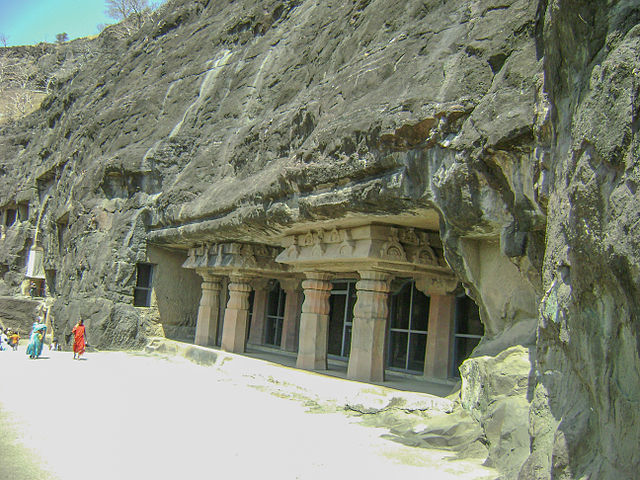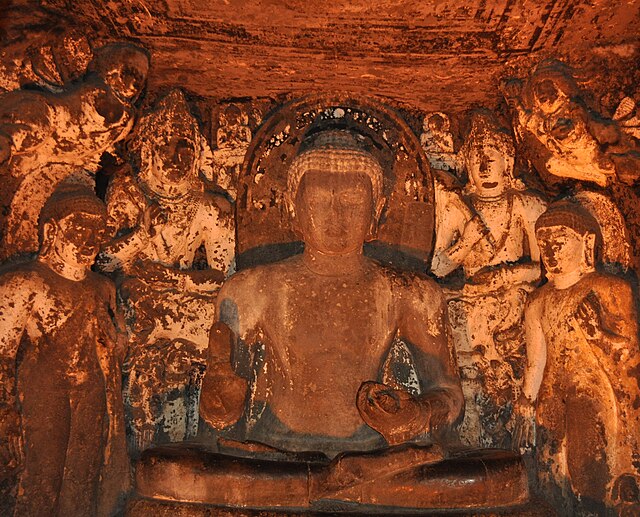Imagine walking into a mountain and finding stories carved into stone, painted with ancient colors, and whispering tales from over a thousand years ago. That’s exactly what Ajanta and Ellora Caves offer—mystery, history, and jaw-dropping artistry bundled into rock-cut sanctuaries.
The Marvel That Is Ajanta and Ellora

Where Are Ajanta and Ellora Located?
Tucked away in Maharashtra, India, Ajanta and Ellora Caves sit about 100 km apart near the city of Aurangabad. Surrounded by hills and silence, these UNESCO World Heritage Sites have become must-visit destinations for art lovers, history buffs, and spiritual seekers.
How Old Are These Caves?
Ajanta dates back as far as the 2nd century BCE, with some of the later caves carved out around the 6th century CE. Ellora’s construction began in the 5th century CE and continued up to the 10th century. That’s over 2,000 years of history you’re walking into!
Ajanta Caves: A Spiritual Canvas
The Buddhist Connection
Ajanta is entirely Buddhist. Monks, artists, and sculptors dedicated these caves to spreading the teachings of Buddha through murals and carvings.
The Architecture of Devotion
Ajanta features two primary cave types: Chaitya-grihas (prayer halls) and Viharas (monasteries). Each was meticulously carved out of basalt rock—talk about dedication!
The Art That Speaks
The cave paintings at Ajanta are unlike anything else. They tell stories from the Jataka tales (about Buddha’s previous lives) and portray royal processions, divine beings, and daily life—all with stunning realism and emotion.
Must-See Highlights in Ajanta
Cave 1: The Masterpiece
Cave 1 is the showstopper. The walls are covered in detailed murals, including the famous Padmapani and Vajrapani paintings—two serene, almost haunting depictions of Bodhisattvas.
Cave 26: The Story of Mahaparinirvana
This cave houses a magnificent sculpture of Buddha’s final moments, lying in peace, with grieving disciples around him. It’s powerful, to say the least.
Ellora Caves: A Testament to Tolerance

The Trio of Religions: Buddhism, Hinduism, Jainism
Unlike Ajanta, Ellora celebrates religious diversity. It has 34 caves, split between Buddhist (1–12), Hindu (13–29), and Jain (30–34) traditions. That’s India for you—diverse and deeply spiritual.
Rock-Cut Wonders
Each cave was chiseled from top to bottom (literally!). Imagine carving a temple downward into a mountain, and you’ll get an idea of how extraordinary this feat is.
Harmony in Stone
What’s fascinating is how the caves coexist peacefully, reflecting India’s historical tolerance. Walking from a Buddhist monastery to a Hindu shrine to a Jain temple—all in one place—is truly surreal.
Star Attractions in Ellora
Kailasa Temple: An Architectural Marvel
Cave 16, the Kailasa Temple, is the crown jewel. It’s the world’s largest monolithic structure—carved from a single rock. Dedicated to Lord Shiva, it’s not just a temple; it’s an entire mountain turned into a masterpiece.
Jain Caves: The Hidden Gems
Smaller in scale but incredibly detailed, the Jain caves (especially Cave 32) are full of intricate carvings and quiet elegance.
The Artistic and Cultural Significance

Paintings That Time Couldn’t Fade
Despite centuries of wear and tear, many Ajanta murals still retain their colors. They reveal insights into ancient Indian fashion, culture, and emotions. It’s like a time capsule on stone walls.
Sculptures That Breathe History
Ellora’s statues are bold, muscular, and grand. They showcase epic stories from Hindu texts like the Ramayana and Mahabharata, bringing myth to life in solid rock.
When and How to Visit

Best Time to Visit Ajanta and Ellora
Avoid the scorching summer. The ideal window is November to March—cool weather and clear skies make for a pleasant trip. Monsoons can be tricky due to slippery paths.
How to Get There
-
By Air: Aurangabad Airport is closest.
-
By Train: Well-connected to major cities like Mumbai and Pune.
-
By Road: Rent a cab or take a bus from Aurangabad.
Tips for Travelers
-
Wear comfy shoes—you’ll be walking a lot.
-
Carry water; it gets hot, even in winter.
-
Hire a guide or use an audio tour to unlock the stories behind each carving.
-
Photography is allowed in most areas but avoid flash near paintings.
-
Don’t rush! Each cave is a universe of its own.
Conclusion
Visiting the Ajanta and Ellora Caves isn’t just a sightseeing experience—it’s a soulful journey through centuries of devotion, artistry, and tolerance. Whether you’re an art lover, a spiritual seeker, or just a curious traveler, these ancient wonders have something profound to offer. So, pack your bags and get ready to walk into history—quite literally carved in stone.
FAQs
1. Are Ajanta and Ellora caves open every day?
Ajanta is closed on Mondays, while Ellora is closed on Tuesdays. Plan accordingly!
2. How long does it take to explore each site?
You’ll need a full day for each. Don’t try to cram both into one day—you’ll miss out on the magic.
3. Are the caves wheelchair accessible?
Unfortunately, most caves involve steps and uneven ground, making them hard to access for those with mobility issues.
4. Can I visit with kids?
Absolutely! Kids will love the statues and the cave-like feel. Just keep an eye on them—it’s easy to wander off.
5. Do I need a guide?
Not mandatory, but highly recommended. A good guide brings the silent stones to life with stories and context.

